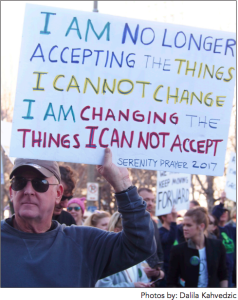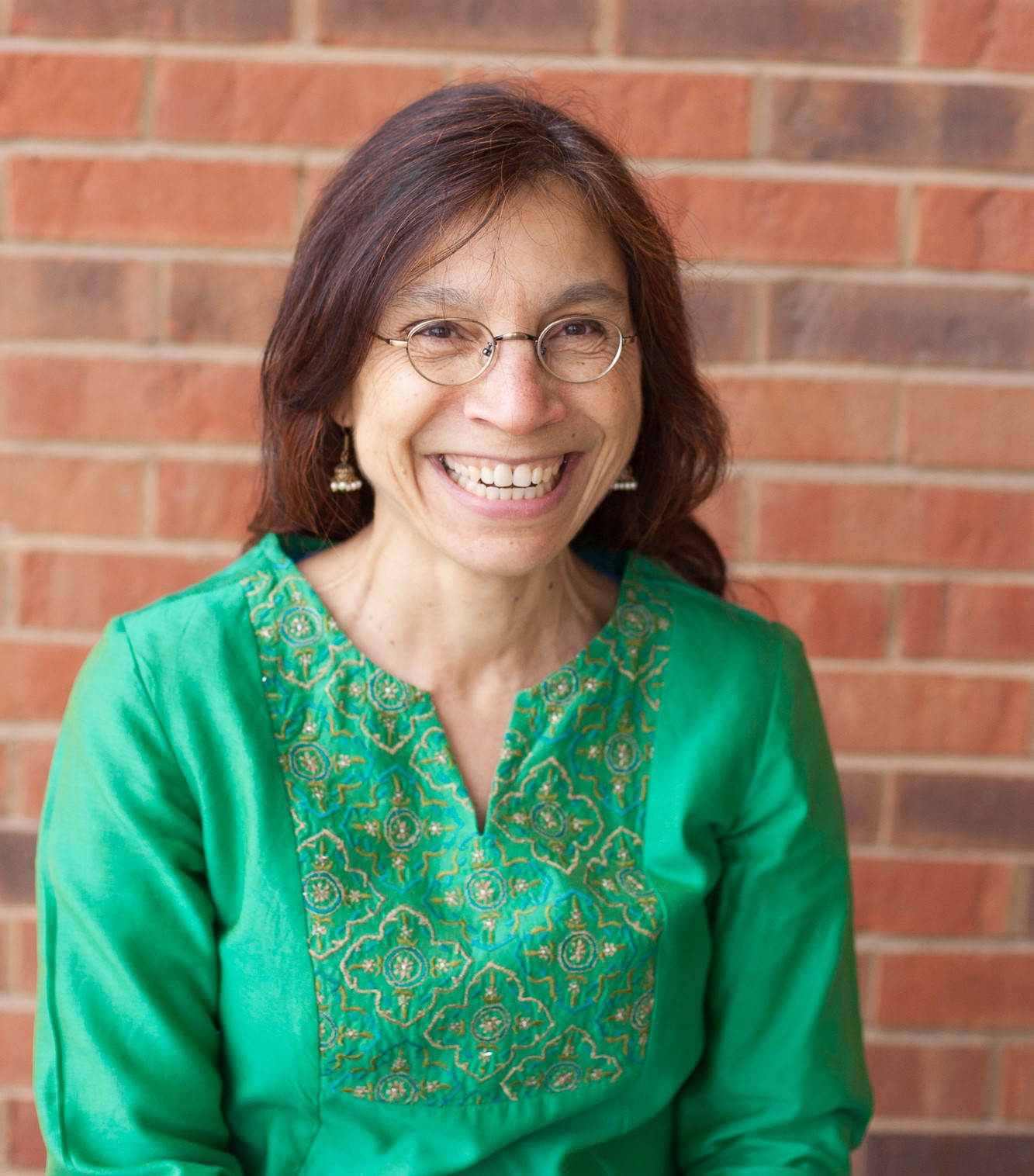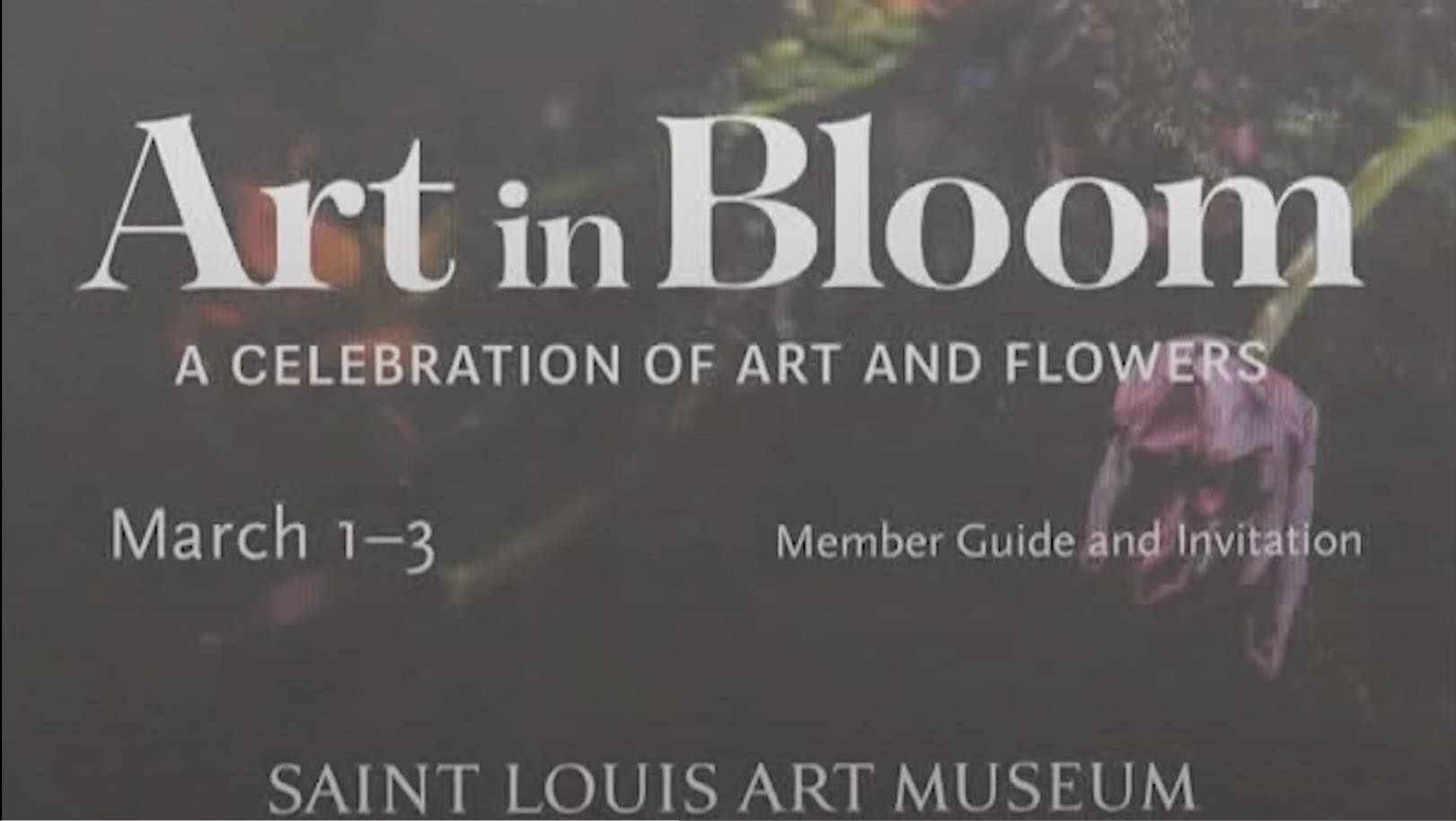Meramec students seek to combat political complacency
By: Katie Hayes
Editor-in-Chief
Hundreds of protesters flooded the steps of Thomas F. Eagleton United States Courthouse and spilled onto 10th Street.
Meramec student Madison Bouse sat on one of the grey stone walls while Faizan Syed, executive director of CAIR-St. Louis, addressed the crowd. Protesters out of earshot continually asked one another if anyone could hear what the speaker said, but the answer was always no. Every few minutes though, various chants arose from the crowd, “No bans, no walls, America is home to all!”
Nearly a week after President Donald Trump issued the widely-disputed immigration order that barred people from seven predominantly Muslim countries from entering the U.S., two separate protests merged in downtown St. Louis on Saturday, Feb. 4.
The Council on American-Islam Relations in Missouri organized one that met at the Federal Courthouse, while the other met at Union Station and marched to the Federal Courthouse.
Both marched down Market Street to the Gateway Arch.
Global Studies Program Coordinator Lisa Martino-Taylor teaches Social Movement Culture of 1960s America at Meramec. When protests and marches take place in St. Louis, Martino-Taylor uses them as examples in her class discussions to fit them into the theoretical framework.
“There are all kinds of ways for people with disparate levels of power in society to have their voice heard,” Martino-Taylor said.
“And if those who are in power do not allow for those releases of voice and social steam so to speak, they are going to find a way to make sure that they are heard.” Martino-Taylor said when a group of individuals engages in a collective action to achieve the same goal, at the same time, the people bond—especially if they are in the political realm.
When this continues over time, it becomes a social movement.
“We can either engage people in conversations and political processes—and continue to do that— or we may be faced with the challenge of listening to them when they’re being less than polite and quite direct in terms of protest activity,” Martino-Taylor said.
“That’s also a political action and until we see it as a political action we are just going to keep tamping down on people who are protesting, which increases that social pressure where it will emerge bigger and more powerful next time.” There are currently two students studying at St. Louis Community College from countries included in the travel ban who plan to return, according to Vice Chancellor of Student Affairs Anthony Cruz.
“When we heard [about the ban] we ran the numbers for students who could be affected,” Cruz said.
“We only have a couple.” Chancellor Jeff Pittman sent an email to the STLCC community on Tuesday, Jan. 31 which did not take a political stance as the private universities in St. Louis—Webster University, Saint Louis University and Washington University in St. Louis—did in public statements.
Meramec Provost Carol Lupardus said that since STLCC is a public institution, it cannot take a political stance. University of Missouri—St. Louis did not take a public political stance, but did hold a meeting on Jan. 31 to discuss the executive order and provide students and staff with information about the impact of the travel ban.
Lupardus said nothing similar is planned to date, but students could work with STLCC to plan something.
Bouse is one of 21 members of the Student Social Action Committee at Meramec.
The committee, which contains five subcommittees that work on various projects, aims to educate students on how to create change in their communities.
Meramec student Xavier Phillips founded the committee last semester and is also one of two students who sits on Chancellor Pittman’s Student Advisory Committee.
“I don’t know how much students can do, but I’m willing to find out,” Phillips said.











